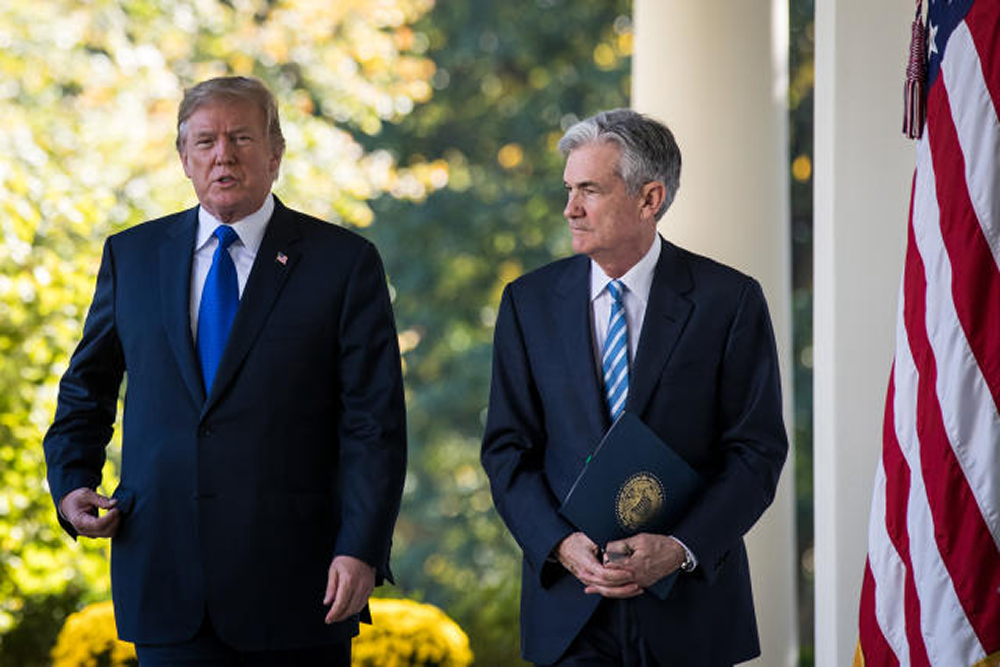On May 29, local time, Federal Reserve Chairman Jerome Powell held a highly publicized meeting at the White House at the invitation of U.S. President Donald Trump. This was the first meeting between the two since Trump began his second term and their first confrontation since November 2019. According to an official statement from the Federal Reserve, the discussion focused on the development of the U.S. economy, covering core issues such as economic growth, employment, and inflation.

Background: The Long Game Between Trump and Powell
The tense relationship between Trump and Powell has a long history. Since Trump nominated Powell as Federal Reserve Chairman in 2017, the two have publicly clashed multiple times over differences in monetary policy. Trump has consistently advocated for low interest rates to stimulate economic growth, and especially at the beginning of his second term, he has become increasingly critical of the Federal Reserve in the face of inflationary pressures and market volatility caused by high tariff policies. In April 2025, Trump repeatedly criticized Powell on social media platform "Truth Social," calling him "slow to act" and "playing politics," even suggesting he might seek to remove Powell, raising widespread concerns about the independence of the Federal Reserve.
The "reciprocal tariff" policy implemented by Trump—imposing tariffs of 10% to 60% on major trading partners—has led to increased import costs for the U.S. and rising inflation expectations. According to estimates from Yale University's Budget Lab, the tariff policy could result in an additional annual expense of $4,900 for the average American household, and the consumer confidence index has fallen to a near three-year low.
Discussion Focus: The Interest Rate Debate and Economic Outlook
According to various sources on platform X, Trump explicitly expressed his dissatisfaction with the Federal Reserve's maintenance of a benchmark interest rate of 4.25%-4.5% during the meeting. He believes that the current inflation level is close to the Federal Reserve's 2% target, and that lowering interest rates could not only stimulate consumption and investment but also alleviate the negative impact of tariff policies on the economy. A White House spokesperson quoted Trump as saying, "Not lowering interest rates puts us at a disadvantage in our competition with China." Trump's stance reflects his consistent economic strategy: boosting short-term economic growth through loose monetary policy, in conjunction with his "America First" trade protectionism.
However, Powell demonstrated the Federal Reserve's traditional independence during the meeting. According to the Federal Reserve's statement, Powell made no commitments regarding monetary policy expectations, emphasizing that policy adjustments would be based on the latest economic data to support the dual mandate of maximum employment and price stability. He specifically pointed out that the Trump administration's high tariff policies could drive up inflation and suppress economic growth, and that the Federal Reserve needs to remain cautious in policy formulation to assess the long-term impacts of these external factors.
The inflation data released on May 29 added context to the meeting. According to the latest April Personal Consumption Expenditures (PCE) price index, the inflation rate has dropped to 2.2%, indicating that the Federal Reserve's tightening policies in recent years have achieved some effectiveness. However, the market generally expects that price increases driven by tariffs will become apparent in the coming months, and Wall Street analysts believe the Federal Reserve may delay interest rate cuts until September or even later.
Social Media Public Opinion Reaction
On platform X, accounts such as @WallStTV pointed out that Powell reiterated the Federal Reserve's non-political stance during the meeting, attempting to quell concerns about political interference. However, some voices argue that Trump's public pressure marks a shift from "remote shouting" to a "substantive phase" of intervention in the Federal Reserve. @hongsv11 commented, "Trump wants to lower interest rates; this is the cornerstone of his economic policy." In the market, U.S. stocks experienced increased volatility after the meeting news was released, with the Dow Jones and S&P 500 indices briefly falling but ultimately closing higher, reflecting investors' complex emotions regarding policy uncertainty.
Li Fuyi, a deputy researcher at the Institute of Foreign Economic Research of the National Development and Reform Commission, analyzed that Trump's high tariffs and immigration restrictions have increased economic uncertainty, leading the Federal Reserve to prefer a wait-and-see approach rather than hasty action.
The Independence of the Federal Reserve Under Test Again
The independence of the Federal Reserve has always been a cornerstone of the U.S. financial system. However, Trump has recently threatened to remove Powell multiple times and even privately discussed replacing him with Kevin Warsh, who is more inclined toward loose policies, raising concerns about the credibility of the dollar. Wang Zaibang, a senior researcher at the Taihe Institute, warned that if the Federal Reserve loses its independence, it would undermine the foundation of the dollar's 80-year hegemony and could trigger turmoil in global financial markets.
Although Trump stated on April 22 that he had "no intention" of removing Powell, this meeting shows that his pressure has not diminished. Powell, through public statements and remarks after the meeting, emphasized that his term lasts until May 2026 and that he is legally protected from political dismissal, attempting to stabilize market expectations.
Outlook: The Crossroads of Economy and Policy
The meeting between Trump and Powell at the White House not only continues their long-standing game but also reflects the complex situation of the U.S. economy under high tariffs, high debt ($36 trillion), and the global trend of "de-dollarization." Goldman Sachs predicts that if U.S. Treasury yields remain above 6% for an extended period, the dollar's status as a reserve currency could be shaken within a decade.
The Federal Reserve's next moves will become clearer during the June interest rate meeting, with the market generally expecting rates to remain unchanged, but Powell's statements and dot plot will provide clues for future policy directions.
免责声明:本文章仅代表作者个人观点,不代表本平台的立场和观点。本文章仅供信息分享,不构成对任何人的任何投资建议。用户与作者之间的任何争议,与本平台无关。如网页中刊载的文章或图片涉及侵权,请提供相关的权利证明和身份证明发送邮件到support@aicoin.com,本平台相关工作人员将会进行核查。




